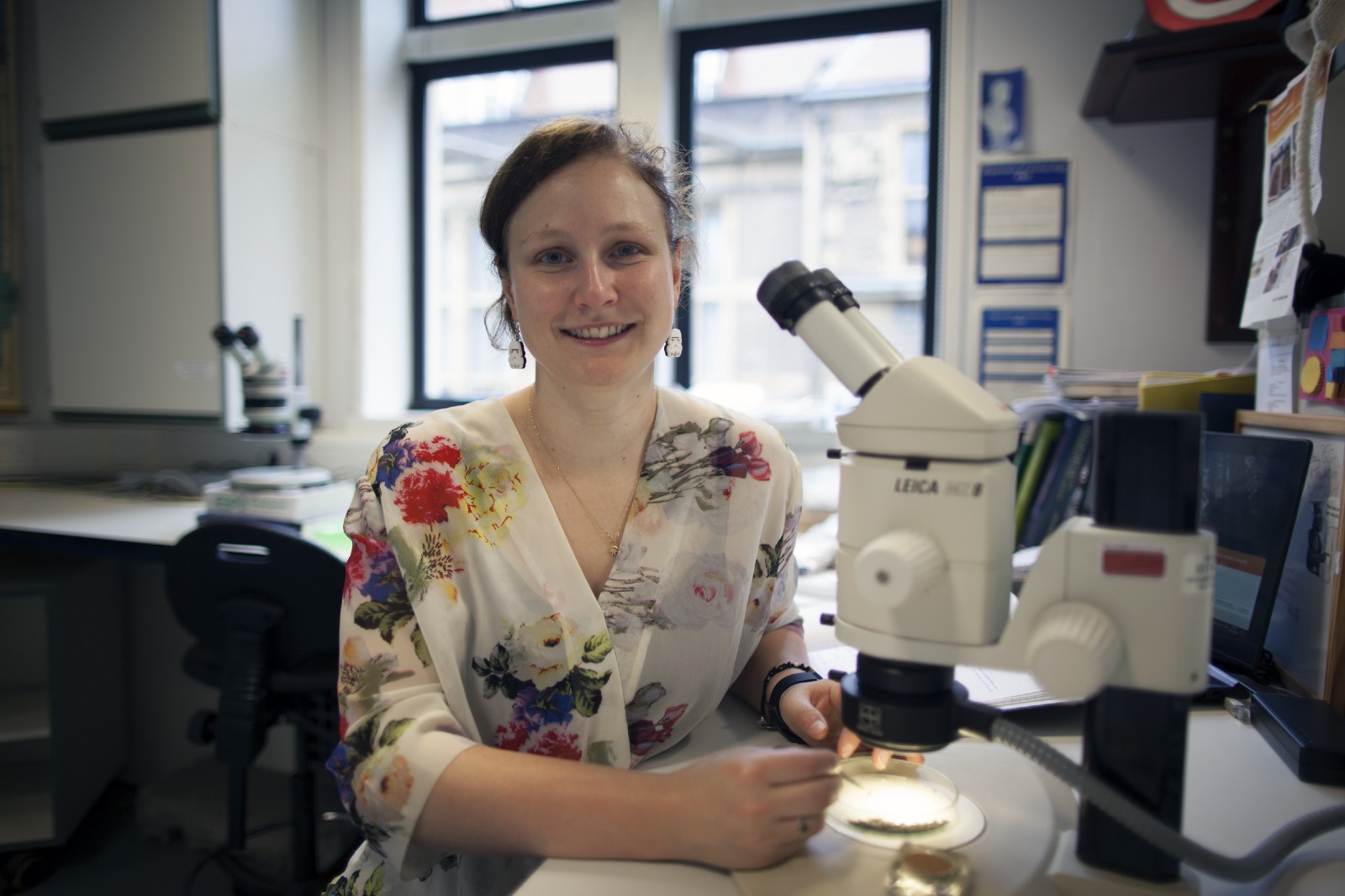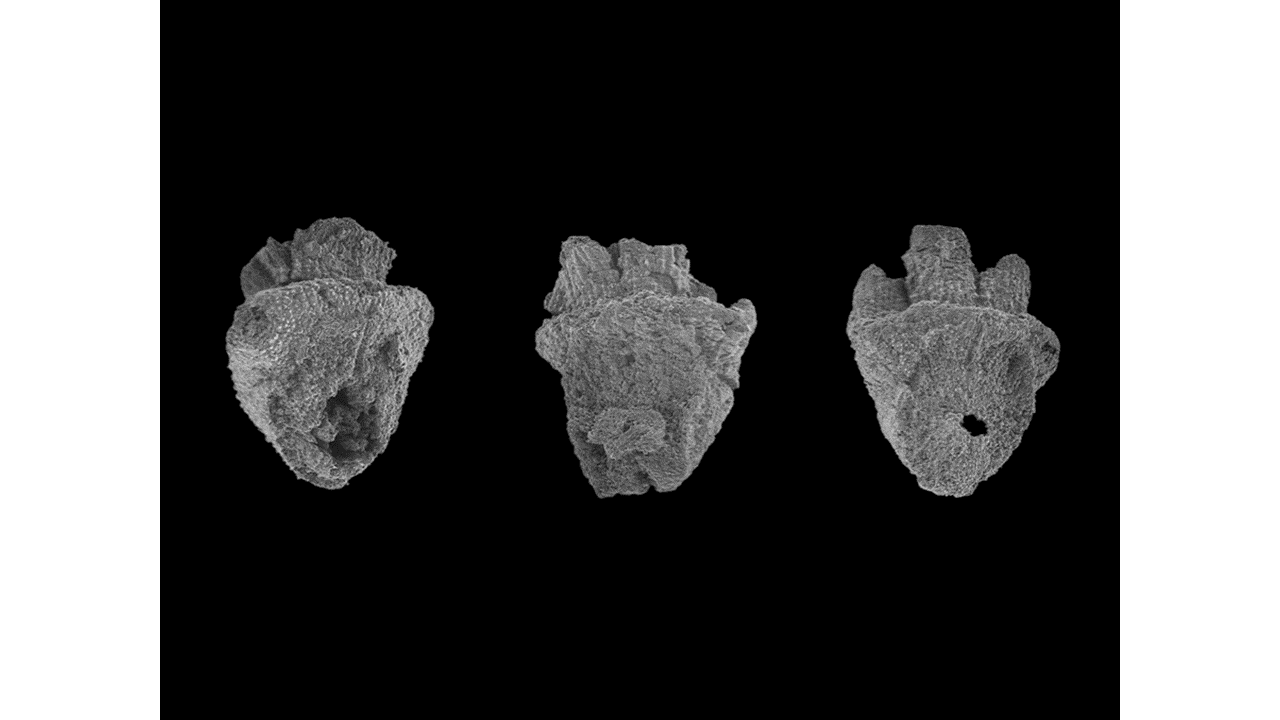The Open Archaeobotanist Guest Blog - Dr Jennifer Bates
Interview conducted on 22nd March 2021
Dr Jennifer Bates is currently a Postdoctoral Fellow at the University of Pennsylvania focused on archaeobotanical investigations of the Indus civilisation in South Asia. She has very kindly agreed to be the first person to answer my questions about why she became an Open Archaeologist.

Picture courtesy of Jennifer Bates - the picture is of Jennifer Bates herself working at a microscope.
Why I am an Open Archaeobotanist.
Why did you become an Open Archaeologist?
Simply I believe that it is the way forward - data will be equitably available for all. Such as researchers in low income countries and others that do not have access to journals routinely. Many researchers do not have access to all the journals, even most university libraries in the US do not, so that means data within articles and supplementary files is often not accessible.
I feel like a latecomer to open science because I had a bad experience when a person in a position of power was going to use data from my doctoral work before it was published. Therefore, I think there is a need to have protection for students, early career researchers and people not in positions of power. This is not only about protecting data but also protecting ideas surrounding the data. Data needs to be made available but in a safe and balanced fashion.
But I also have a much more selfish reason to want open science and particularly open data. It is very hard to find comparative data. If you want to do this type of work it is very hard and very time consuming at the moment.
I did compile (only published) macro-botanical data for Indus plants and produced a data paper on this work. This took a lot of time as I had to use Google searches and trawl through journals. Many of the articles were only in paper journals. This means that much of this data would otherwise be inaccessible to researchers that do not have access to an academic library. So putting data into open repositories is needed to change this situation and move research forward.
How did you become an Open Archaeologist?
I came to more open ways of working through starting to compile datasets and the frustrations that this currently involves.
I have also become more aware of open science in archaeology through listening to talks and the work of certain members of our discipline.
I would in fact say that I am still becoming an open archaeologist as I still have much to learn.
Something I am interested in is the equity, diversity and inclusion aspect of open science. I have previously purposely published a review article of phytolith data from the Indus Civilization in a South Asian journal that was not open access but I knew would be more available to Indian and Pakistani colleagues. This paper drew together information from inaccessible sources to give better access to the data to the community of researchers that would want to access it.
This article can be found here: Bates, J. & Petrie, C.A. 2016. Phytolith Analysis and the Indus Civilisation: a review. Man and Environment, XLI(2): 32-49.

Picture courtesy of Jennifer Bates - SEM picture of archaeological rice spikelet bases.
What is your biggest frustration at the moment in terms of the adoption of open science practices in archaeology?
The cost of gold open access publishing and the long term cost of maintaining datasets. This is particularly the case for postdoctoral researchers in the US that have no extra funding, and for scholars in other parts of the world with less funding support, for this but might not be such an issue with researchers in the UK or EU. This model of publication is therefore excluding some researchers.
There is also an issue with predatory open access journals that charge large amounts for you publishing your work.
For datasets, supposedly universities will support this for you, but there is a worry about what will happen with the data when you leave that University. Who owns that data? Will it be kept there long term?
What is the most inspirational piece of open research you have seen lately?
I want to highlight the article written by Dr Lisa Lodwick - Sowing the seeds of future research: data sharing, citation and reuse in archaeobotany. The fact that it highlighted the issues within my discipline and then put forward ways that we can fix them is such a positive message.
There has also been a change in how we are discussing our research. A lot of discussions now happen on Twitter with more openness about what people are currently doing and sharing of topics. Colleagues are sharing work earlier such as R packages, open discussions of ideas, showing pictures to ask for help with identifications, sharing datasets, sharing events that are happening including conferences and talks. There is just more of a willingness to be open as researchers.
What one thing could archaeological researchers do to easily make their work more open?
For researchers, publish your full data in an open repository. For publishers, stop charging so much for open access. For funders, give access for early career researchers for open access and other open science practices.
There needs to be systemic change to allow researchers, by publishers and funders, to make the changes needed to drive forward open science approaches in archaeology.
🌟 I want to thank Jennifer for talking to me about her open archaeology journey 🌟
I wanted to just address some of the issues raised in this interview so that I can suggest a few ways to overcome them:
The cost of publishing open access articles
This is definitely a big issue and a source of inequality in publishing at the moment between those that can afford it and those that cannot. There is an increasing amount of funds that can be applied for to help with article processing charges, such as through internet archaeology, and there is also the option of asking the journal editors for a fee waiver.
However, my suggestion to avoid any need for financial transactions is to go down the green open access publishing route - so this means putting a pre-print and/or post-print of your article on an open repository for long term storage such as using Zenodo or Open Science Framework. It will get a digital object identifier (DOI) and you can also add a license.
Another alternative to traditional publishing is to use Peer Community in Archaeology to publish articles online for free with peer review and recommendations from editors. There is no need to then send this paper on to a journal as the full research lifecycle of the project has been brought to a close by the peer reviewing.
The cost and fragility of dataset storage
The cost of paying for data storage and whether this can be maintained long term for projects is a considerable issue that needs more discussion in archaeology, However, this can be overcome by using open repositories that are free and dedicated to long term storage such as Zenodo or Open Science Framework for self-archiving of your data and project documentation. It is a good idea to make this explicit at the beginning of the project so you can plan for this in your data management plan and set out that long-term storage is an important aspect of the project.
There is definitely a need to invest in more infrastructure around research software and tools as set out in this recent article by Knowles et al. (2021).
Scooping of data and ideas
It is an ugly truth of our current competitive research culture that unethical practices such as data scooping, or people in positions of power taking the ideas developed by those in a less advantaged position, do still happen. And I was very sad to hear that Jennifer had experienced such a situation. However, I feel that the open science movement will get us away from these situations as it is based on a more equitable and inclusive approach to research. Being more open with your research at all stages of the research lifecycle means that your work is more known by others and consequently it is much harder for these negative practices to occur. Depositing your research outputs in an open repository with a license, tells other researchers how you want your outputs to be used and with each piece of your work having a DOI, it makes it much easier for others to cite your work properly.
If you would like to also share your open archaeology journey by answering these questions, then please do get in touch with me - ekaroune@googlemail.com
You can cite this blog by using this citation:
Emma Karoune, Esther Plomp, & Jennifer Bates. (2021, July 2). EKaroune/The-Open-Archaeobotanist: The Open Archaeobotanist blog October 2020 to July 2021 (Version v1.0). Zenodo. http://doi.org/10.5281/zenodo.5062417